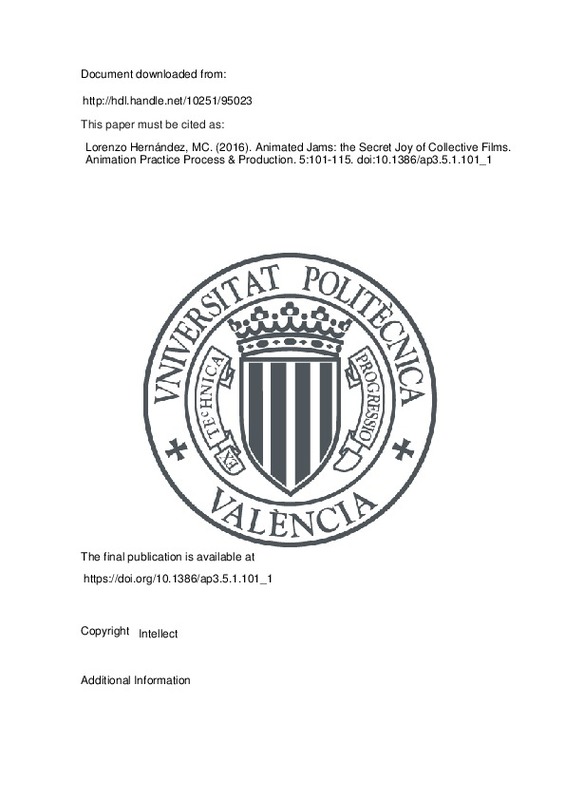JavaScript is disabled for your browser. Some features of this site may not work without it.
Buscar en RiuNet
Listar
Mi cuenta
Estadísticas
Ayuda RiuNet
Admin. UPV
Animated Jams: the Secret Joy of Collective Films
Mostrar el registro completo del ítem
Lorenzo Hernández, MC. (2016). Animated Jams: the Secret Joy of Collective Films. Animation Practice Process & Production. 5:101-115. doi:10.1386/ap3.5.1.101_1
Por favor, use este identificador para citar o enlazar este ítem: http://hdl.handle.net/10251/95023
Ficheros en el ítem
Metadatos del ítem
| Título: | Animated Jams: the Secret Joy of Collective Films | |
| Autor: | ||
| Entidad UPV: |
|
|
| Fecha difusión: |
|
|
| Resumen: |
[EN] This article presents an overview on a rare genre from independent animation, the animated `jams¿ or collective films, where all invited authors are free to contribute creatively to the ensemble. Animated `jams¿ have, ...[+]
|
|
| Palabras clave: |
|
|
| Derechos de uso: | Reserva de todos los derechos | |
| Fuente: |
|
|
| DOI: |
|
|
| Editorial: |
|
|
| Versión del editor: | https://doi.org/10.1386/ap3.5.1.101_1 | |
| Tipo: |
|







![[Cerrado]](/themes/UPV/images/candado.png)


